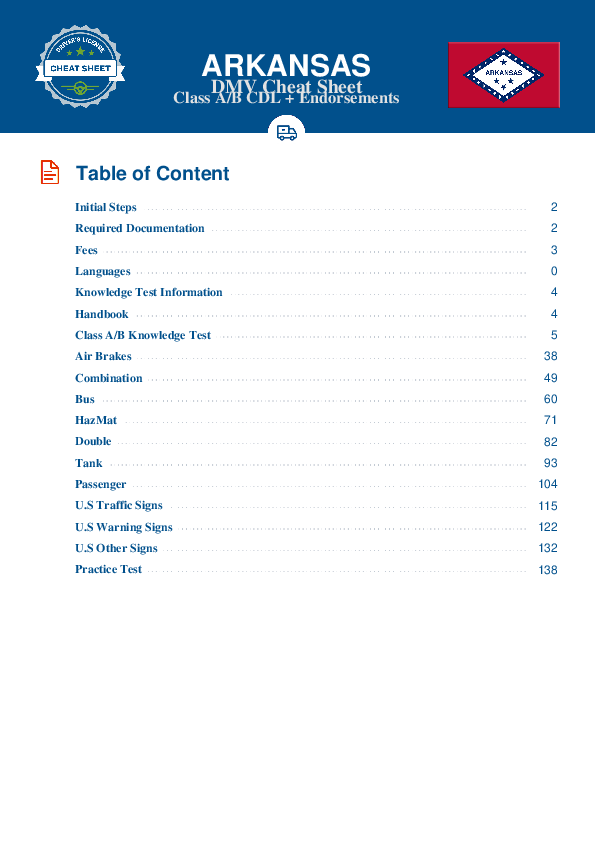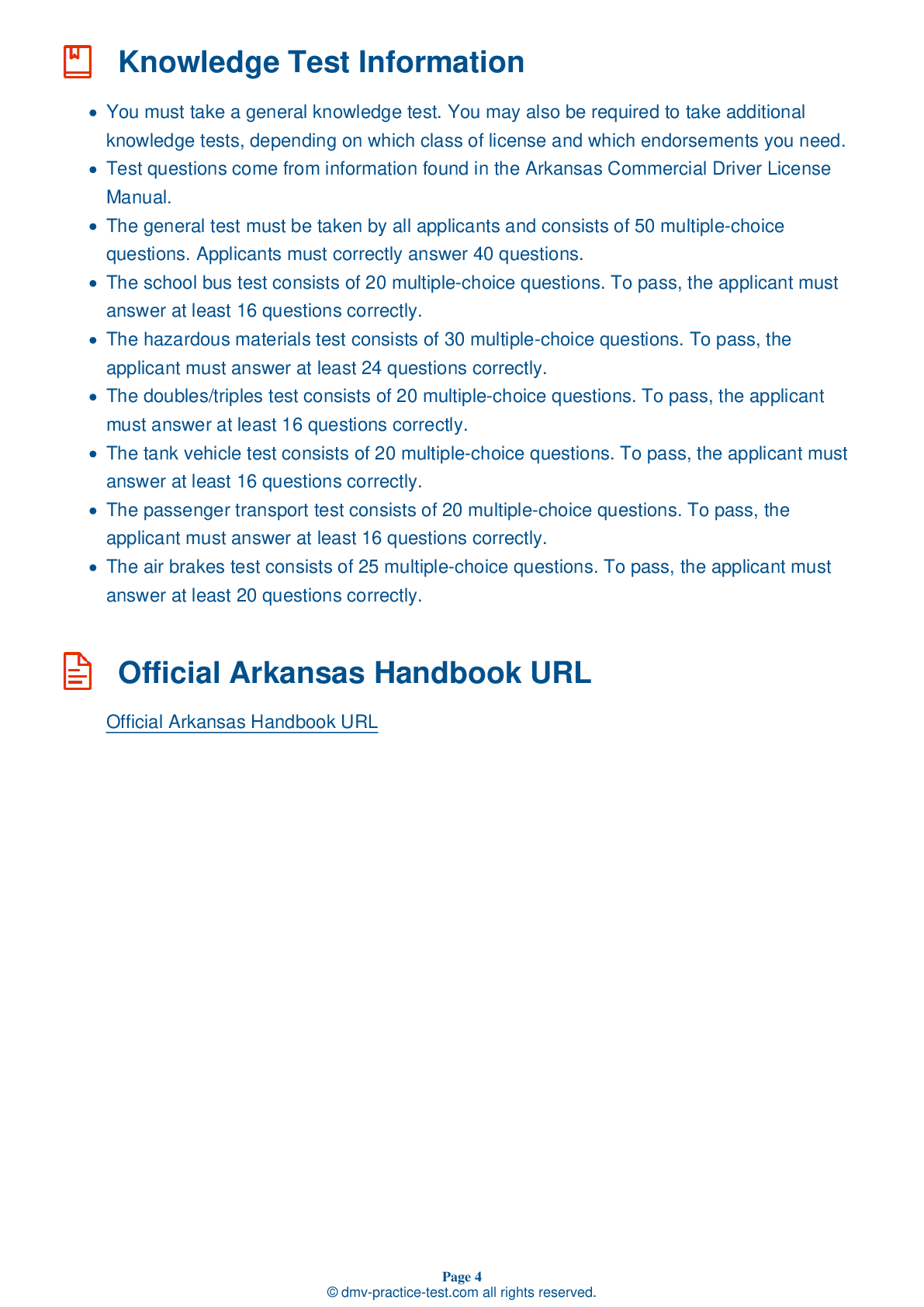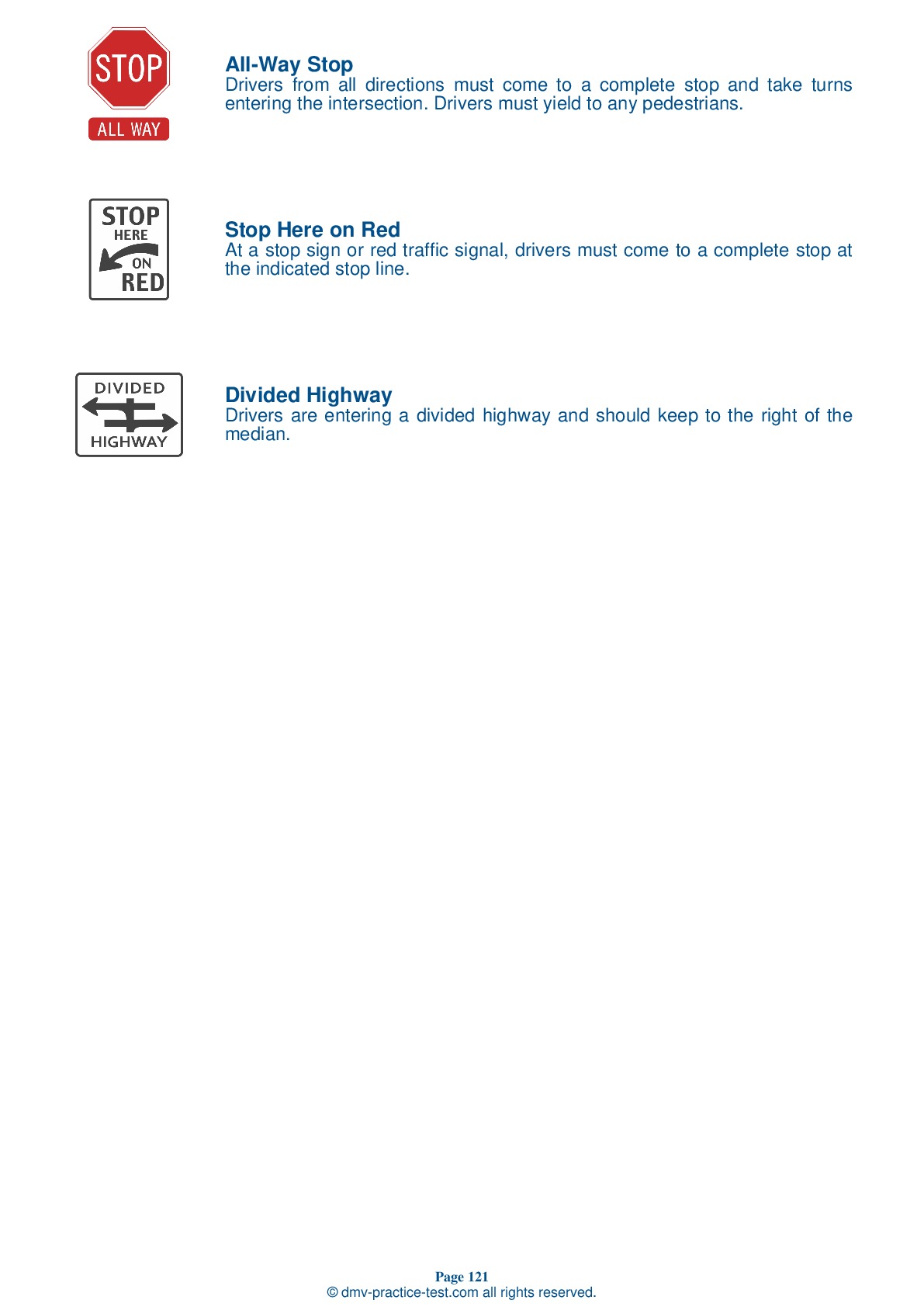Double Triple Test | Arkansas 2025 #1 Page 2 of 3
Train for FREE with our Arkansas CDL double triple practice test online. The official exam test consists of several obligatory parts, with all of them checking your knowledge of different blocks of road rules. If you need to obtain a AR CDL double triple license in 2025, practice as much as possible. Free sample tests published on our website will help you check and improve your knowledge and boost your grades. Please bear in mind that DMV requirements may vary from state to state.
8 . If you must stop on the side of a highway, how far behind your vehicle should warning devices be placed?
When stopping your CMV on the side of a highway, warning devices must be placed 10 feet, 100 feet, and 200 feet behind the vehicle.
9 . While driving, your mirrors:
While driving, regular mirror checks are essential to remaining aware of the traffic around you. Mirrors are also essential to helping you spot possible problems on your own vehicle.
10 . When approaching your vehicle as part of your pre-trip inspection, you should look for what as a sign of trouble?
When approaching a vehicle for an inspection, you should check underneath it for fresh oil, coolant, grease, or fuel leaked onto the pavement. Any of these could indicate a problem that will need to be repaired before the vehicle is driven.
11 . A convex mirror is sometimes called a ____ mirror.
Large vehicles often have curved, convex mirrors, sometimes referred to as "fisheye," "spot," or "bug-eye" mirrors. These mirrors provide a wider view than flat mirrors. However, they also make objects seem smaller and farther away than they actually are.
12 . Hydroplaning:
Hydroplaning is an effect in which a vehicle's tires lose traction with the surface of the road and instead glide along a layer of water. There does not have to be a large amount of water on the road for this to occur.
13 . Windshield wiper blades should be:
When inspecting your vehicle, you should check the wiper blades for damage, stiff rubber, and proper securement. Clean the blades if they are dirty.
14 . Which of the following is required emergency equipment?
All commercial motor vehicles are required to be equipped with the proper emergency equipment. This may include spare electrical fuses; three red reflective triangles, six fuses, or three liquid burning flares; and at least one properly charged and rated fire extinguisher.
See the exact questions that will be on the 2025 Arkansas DMV exam.
99.2% of people who use the cheat sheet pass the FIRST TIME
Lillian MCcranie explains how our CDL study guide was helpful in passing the exam and recommends it to everyone.
Cameron tells us how he purchased the CDL exam, and found it to be a useful tool which helped him pass the exam and find a job.



